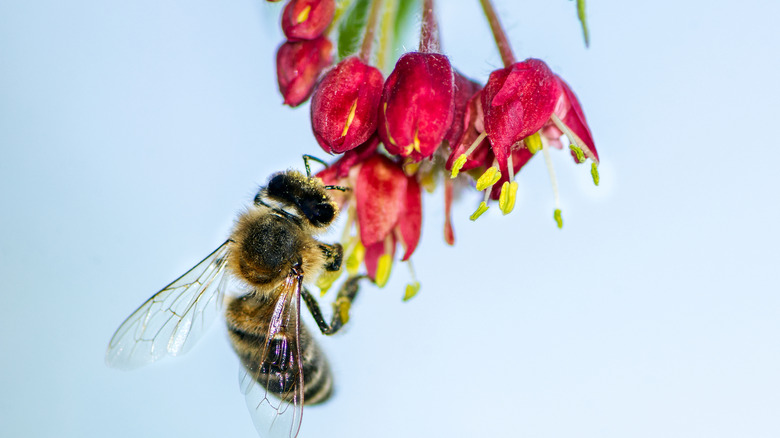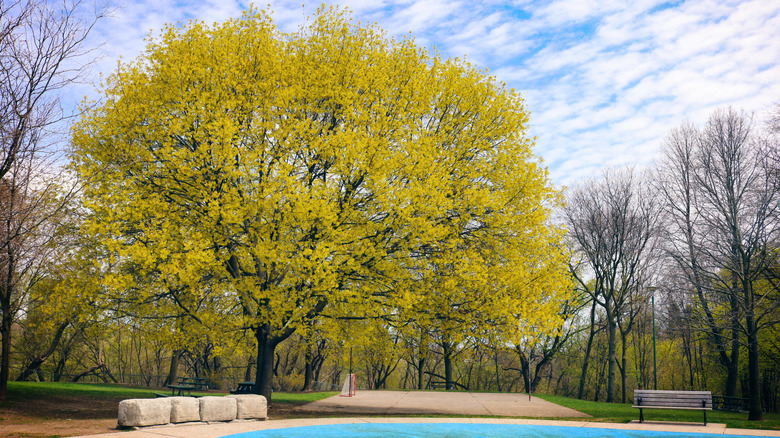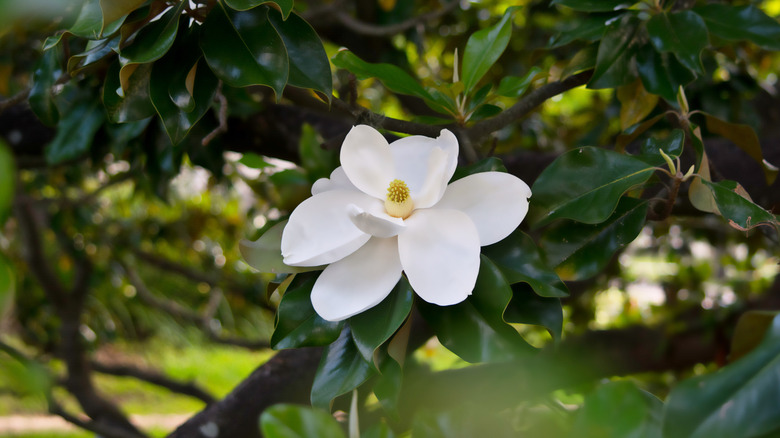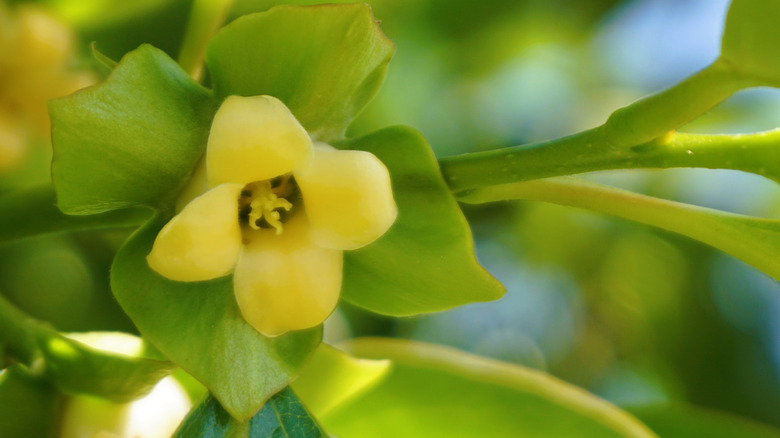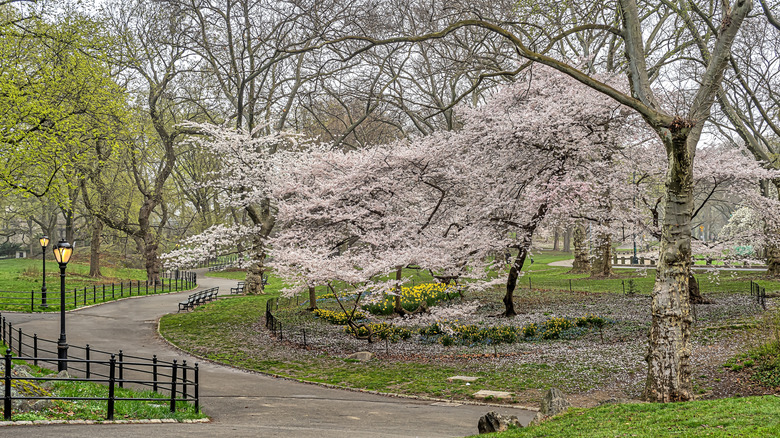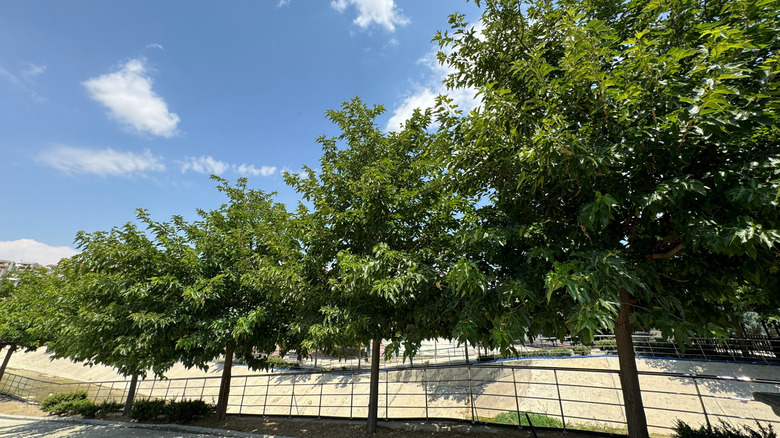These Beautiful Native Trees Attract More Pollinators Than Flowers
When it comes to pollination, we usually think of butterflies and bees hopping from flower to flower around an ornamental garden. It's important work, as anyone who has had to spend an afternoon in a greenhouse pollinating tomato plants with an electric toothbrush knows. But from the bees' perspective, it's not necessarily the best, or most effective, way to get fed. And with their populations in decline, caring for the bees and other pollinators might be the priority right now, instead of worrying about what they might pollinate in the future.
Honey producers tell a different story from this tale of birds and bees and garden blooms. Native flowering trees are supremely important as sources of pollen and nectar, as they make a high volume of both available to many insects and hummingbirds. Because of their long flowering seasons, trees like willow and maple are critical for pollinators. And tree size is also important, since obviously more blooms will support more bees, wasps, and butterflies. And consider the blooms themselves and do your homework; ornamentals like double-flowered fruit trees do not produce pollen or nectar. Let's look at some of our favorite pollinator-attracting native trees that represent some of the many fascinating ways trees can have relationships with pollinators.
Maple
Maple trees bring a lot to the table for both our landscapes and our pollinators. They provide a lot of pollen and nectar, of course, and lots of it, given how large and how common maples are. Honeybees will also make use of maple sap, accessed through holes created by woodpeckers and other birds. And at least one bee species, the sapsucker, is capable of drilling for its own maple sap. Maples are a honey plant, meaning they're critically important for honey production ... a good gauge of how important the plant is to bees in particular.
The 128 species of maple include varieties that are appropriate for many climates across Asia, North America, Europe, and North Africa. Native red, silver, and sugar maple trees are particularly useful to pollinators, as is the box-elder, an unusual maple with compound leaves and a bad reputation. Box-elders are critically important to many insects and birds, including pollinators and 285 butterfly and moth species. While they are often described as invasive, box-elders are native to most of North America and therefore can't be invasive.
Southern magnolias
The ancient southern magnolia evolved with beetles as their pollinators, so they fill a unique niche in the pollinator ecosystem of the American South. Beetles have pollinated flowers for 120 million years and around 52 species of plant throughout the U.S. and Canada are pollinated by beetles today, including economically important annual flowers and bulbs. Southern magnolias are primarily pollinated by beetles, but are also important sources of pollen and nectar for bees as well. In fact, the National Wetlands Research Center suggests that the southern magnolia is adapting in order to privilege bees in their pollination efforts.
You won't find many trees with more drama or broader appeal than southern magnolias. Their huge, fragrant white blooms look prehistoric because they are. This is an ancient species pollinated by ancient insects and occupying an outsized place in many of our memories. Their leathery evergreen leaves (which, when crushed, smell of pine) create a persistent bed of leaf litter, and the branches of unpruned specimens often touch the ground and create childhood fortresses of universal renown.
American persimmon
In terms of their contribution to wildlife, especially pollinators, native American persimmons can't be overestimated. When persimmons flower in May and June, they are primarily pollinated by a wide variety of bees. Like maples, persimmons are host plants to butterflies and moths, with at least 45 species, including luna moths, depending on them for their reproduction. During the two weeks that persimmons typically bloom, their heavy nectar production is a boon to bees. The bell-shaped flowers ensure that rain doesn't dilute the nectar.
However subtle their flowers can be, branches laden with persimmon fruit bring plenty of drama to your landscape. Most persimmon trees are dioecious, including American persimmons, and only the female-flowering trees produce fall fruit. Grow persimmons as a great native fruit tree for your yard or garden, but take care to only take a bit of ripe fruit that comes off the tree with a gentle tug. Unripe persimmons are extraordinarily tart and make for a better dare than pie.
Sweet crabapple
Because crabapples bloom in early spring, they are an important early source of pollen and nectar for bees. A spring crabapple is abuzz with thousands of bees and other pollinators. They are able to pollinate apple trees, making them a natural companion for an apple orchard, large or small. If you're looking for fruit (and you should be) note that crabapples aren't parthenocarpic (though some apples are), so they won't set fruit without pollination. Some varieties are partly self-pollinating but those, of course, can also be pollinated by the usual cast of bees, butterflies, flies, wasps, etc.
These trees are also gorgeous, often mistaken for cherries in the spring. What you're probably picturing now — rows of crabapples alongside a walking path or stream — is spot on, and crabapples are one of the best trees for lining driveways. They have a unique shape that makes them a focal point throughout the year ... not just for gardeners, but for local birds, deer, squirrels, and other critters. If you're not planning to use the fruit for cider or preserves, don't worry; some critter will make good use of it. To get the most fruit, plant at least three trees together.
Mulberry
Mulberry trees provide habitat and food in the form of its sweet fruit for wildlife in general. But they are also as useful to pollinators as pollinators are to them. In fact, they might be more useful to pollinators, since mulberries are wind-pollinated. But, of course, every little bee helps! Monoecious varieties, of course, don't need pollination at all to set fruit.
Growing mulberry trees is a solid choice for any garden or landscape. They improve soil health with deep, penetrating roots, and their nutrient-rich leaves replenish the soil in the fall. Naturally resistant to many pests and diseases, they are a low-maintenance choice that nonetheless provide dramatic color when in bloom, and they have a pleasing shape when not blooming.
Because mulberry trees are wind-pollinated, they release copious amounts of lightweight pollen at high speeds to cover more ground. White mulberries release their pollen at over 380 miles per hour, which is often described as more than half the speed of sound. So if you have or suspect you have a mulberry pollen allergy, it might be wise to steer clear of these.
